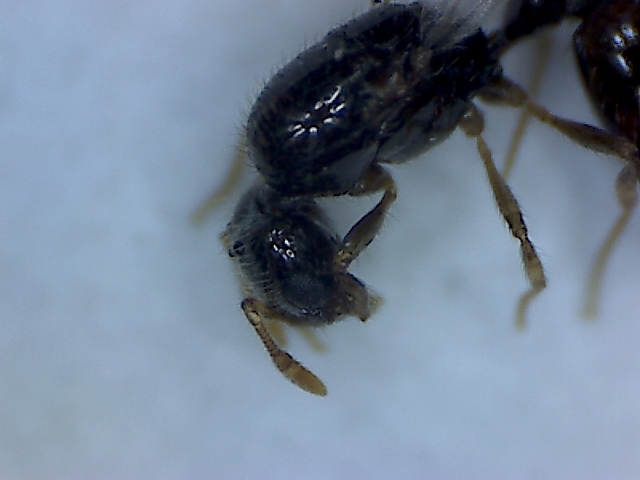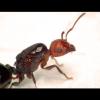1. Location of collection: Simi Valley, CA
2. Date of collection: 7/11/15
3. Habitat of collection: Found in a pool, suburbs.
4. Length (from head to gaster): Only 3mm.
5. Color, hue, pattern and texture: Black, or dark brown.
6. Distinguishing characteristics: No visible spines. Belongs to subfamily Myrmicinae.
























